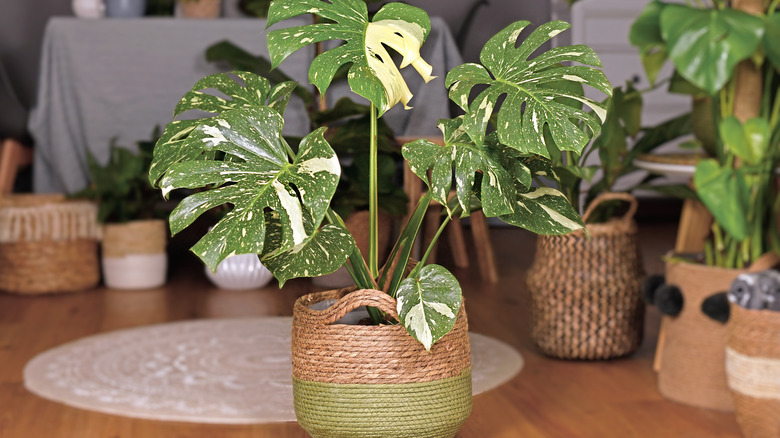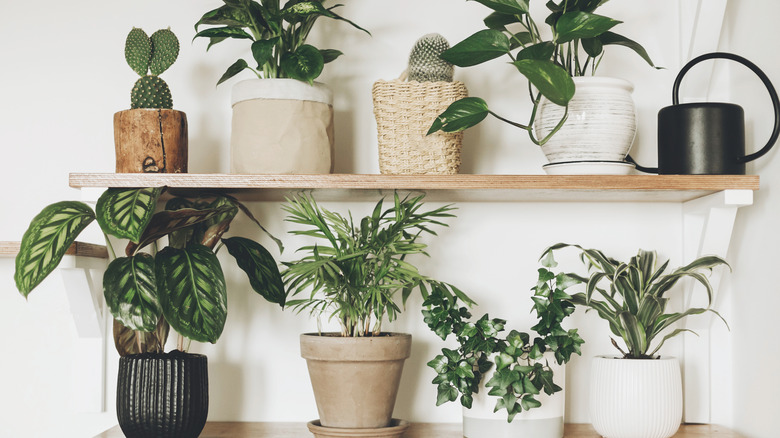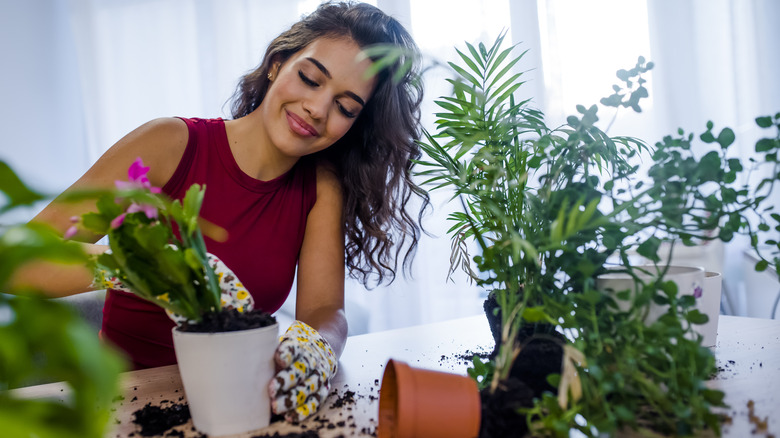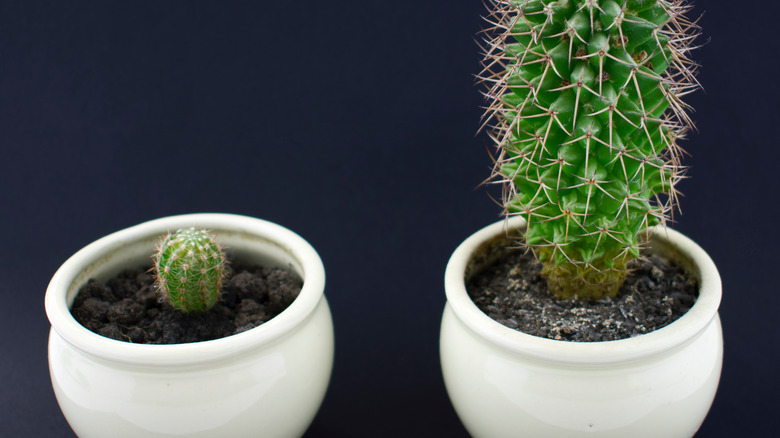How To Create The 'Container Jungle Garden' Perfect For City Gardeners
Houseplants can elevate any interior, no matter the décor. They soften corners, fill empty spaces, and infuse life and color into a room. Gardener Tanya Visser shows how easy it is to create a lush, potted jungle feature that works indoors or out. Once the materials are gathered, creating the garden is simple but makes a profound visual impact. First, decide which way the pot will face, so the tallest plants are in the back. Then, using one large pot that includes a variety of plants, fill the pot first with drainage material and then potting soil. Add large plants, more soil, and then smaller plants last. Ensure the smaller plants aren't in the shade of the larger plants. You'll probably need to regularly augment the container's soil with supplements or plant food. Otherwise, water your container garden as needed, and wipe any accumulated dust from the leaves about once a month.
Outdoor spaces like patios or pools are picture-perfect locations for a large container jungle garden. But if your home is in the middle of a city block or you want to introduce plants into a more intimate area of your place, you can use smaller containers. Better yet, combine several containers for a lush look full of colorful foliage.
A mélange of pots and plants
Plan to utilize a dense concentration of plants to achieve a container jungle garden look. You can arrange them by size, shape, or color. If you start with contrasting containers, have the finish and color play off each other. To add visual interest, employ a variety of pots instead of relying on identical ones. When creating an indoor garden, consider using the color palette from your décor, especially an accent color. For example, if your curtains or rug contain coral or copper tones, you may opt for containers of the same shades. However, if you have a green and blue room, bright red or orange pots will stand out whether you want them to or not.
Once the containers are sorted, match the plants to the pot. In Tanya Visser's demo, half a dozen green plants were potted together. Yet the philodendron (genus Philodendron) offered white stems, and the croton (Codiaeum variegatum) sported a hint of color, plus the leaves varied widely from fan-shaped fronds to vertical columns. A general rule of thumb is not to match. If you have a plant with variegated (multi-colored) leaves, popping it into a pot with a busy pattern will leave a muddle of colors. On the other hand, displaying a showy plant in a plain white pot may show off the intricate pattern of its foliage.
Container gardens can be incredibly versatile
There are all sorts of advantages to container gardening. Versatility is one. Indoors, houseplants offer beauty, color, and oxygen, as well as additional benefits. Depending on their size, most containers are easily movable. In most parts of the US, indoor plants can even be moved outdoors in the summer months. If that's not possible, you can relocate your potted friends from the kitchen to the living area, the bathroom, or the bedroom. Just make sure they have enough natural light to survive.
Another perk to potted gardens is that plants that spread prolifically in a ground garden, like mint or ivy, are easily contained. Just cut them back if they get too bushy, and the cuttings are perfect gifts for plant-loving friends. Additionally, by giving each plant or group of plants its own micro-environment, you can place a sandy soil-loving plant in a pot next to a plant that needs more loam to thrive. The same goes for plants that vary in their need for watering. For example, flowering plants need more water, while plants from arid climates, such as cacti and succulents, require much less water.
Scale, and we don't mean weight
Scale is another vital component to consider when creating a container jungle garden. If you're lucky enough to have a small porch, stoop, or balcony, one large container with several plants may look fantastic. But if the dominant plant scrapes the ceiling, the container will make your space look smaller. Instead, consider a mix of plants from a medium height down, and allow everything to grow a bit to fill the space you want. You may also contrast this look with a large, eye-catching plant to add interest and create a jungle vibe.
Just like small plants housed in a large container may look odd, a big plant in a small container is unlikely to have the effect you want. Scale your plants to fit their containers while keeping an eye on their depth and height. However, the biggest challenge to creating a jungle garden feature may be deciding which plants to include in certain containers and ensuring your plants match your style. Keep color, size, shape, and scale in mind, and you can have a beautiful jungle of a garden using all your favorite containers and plants.



